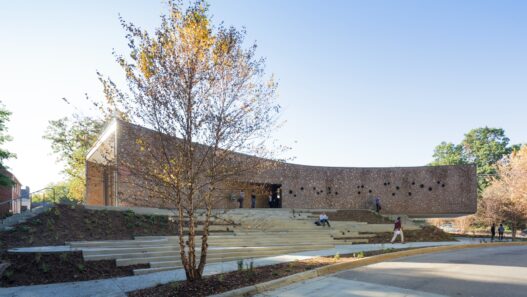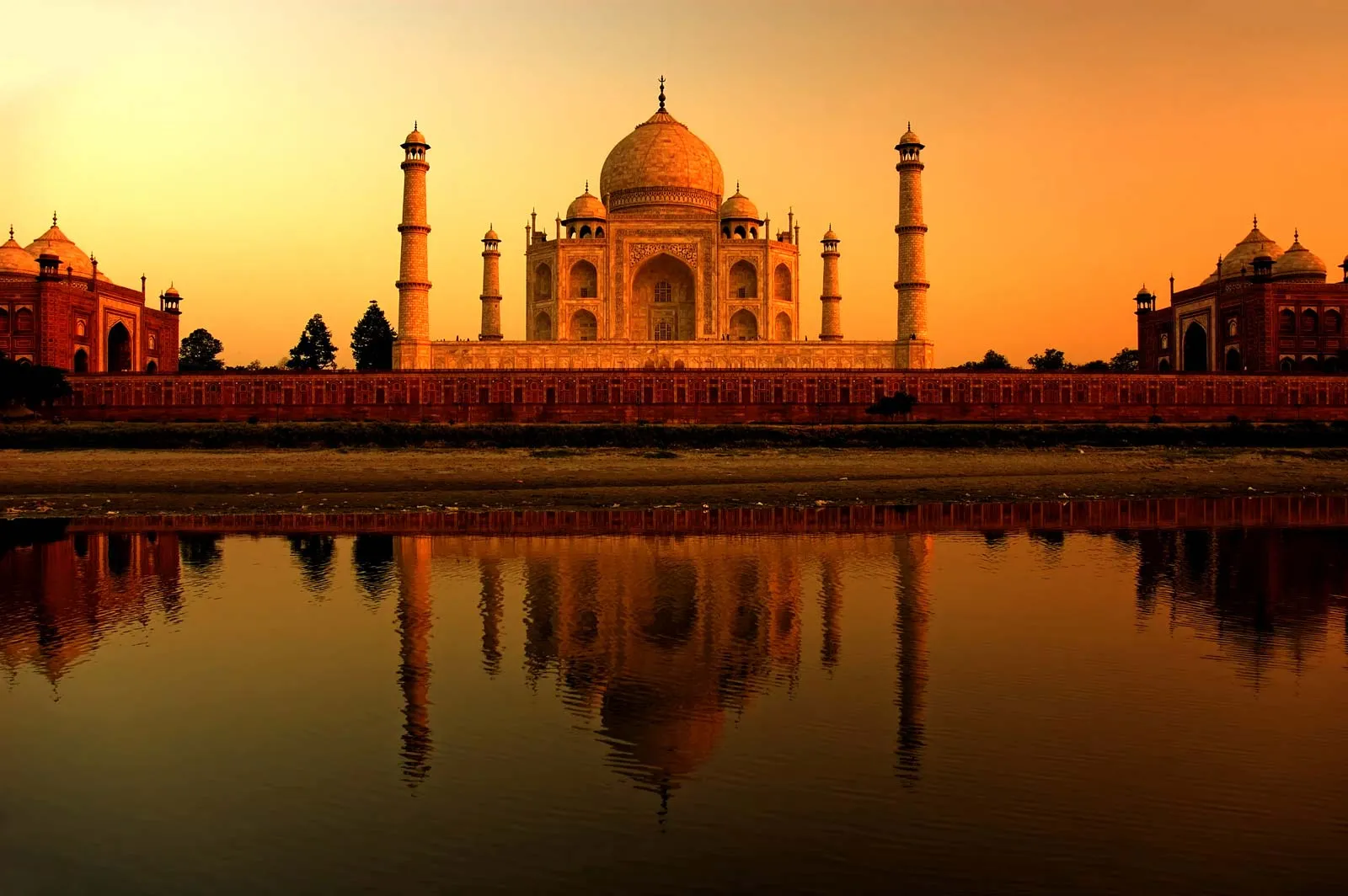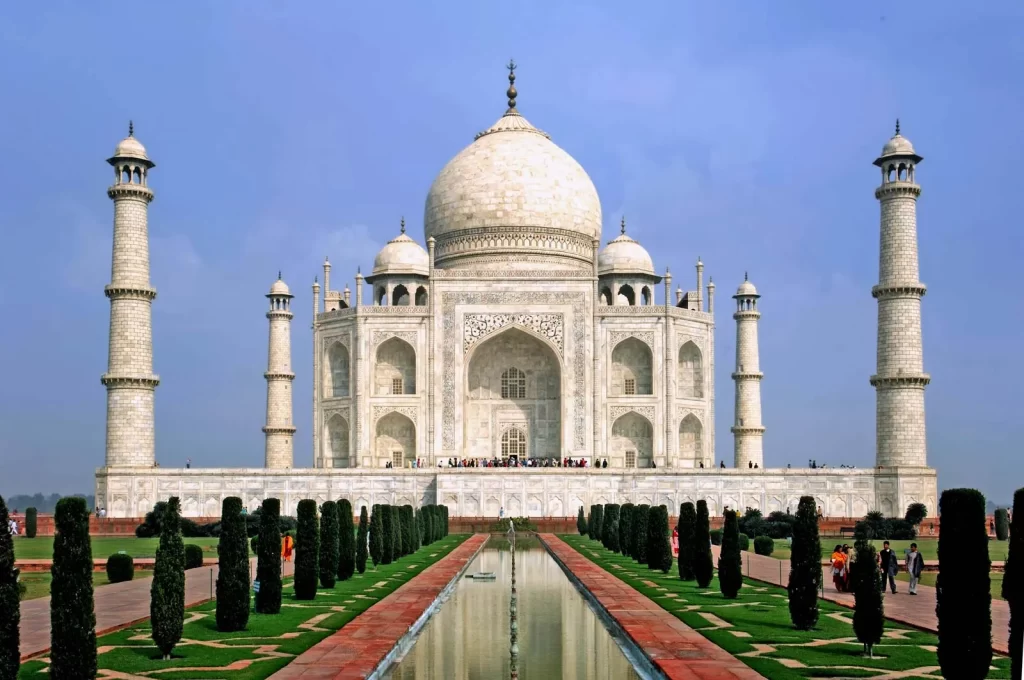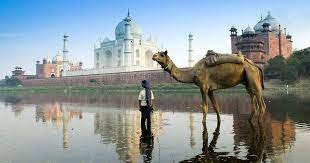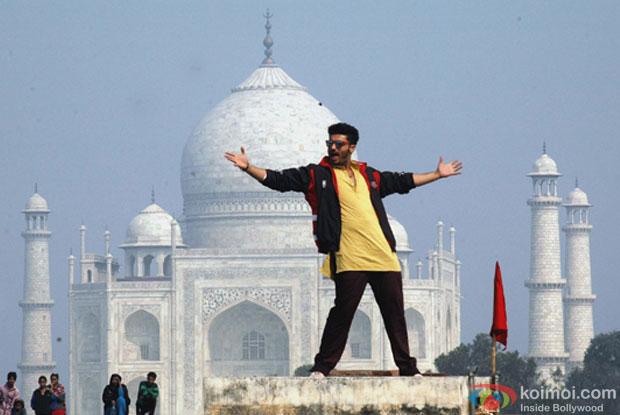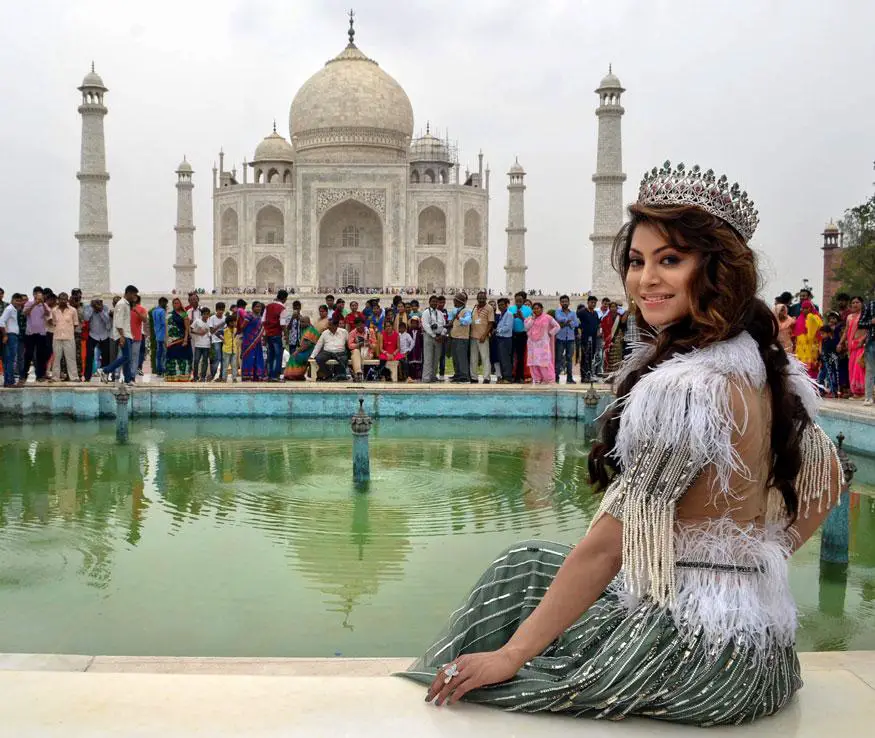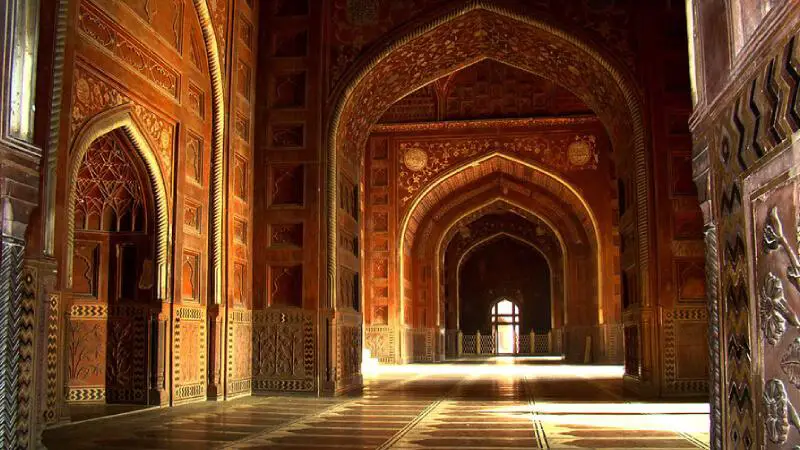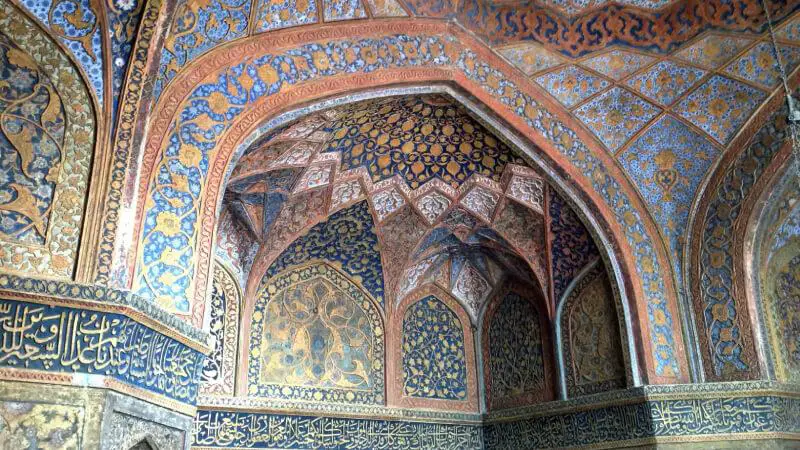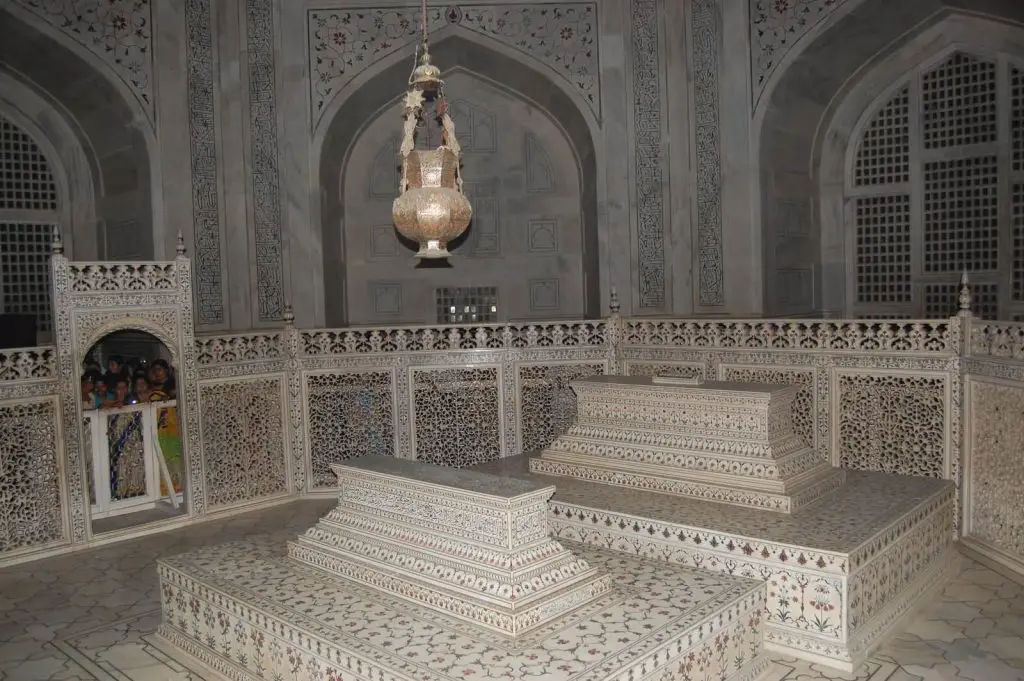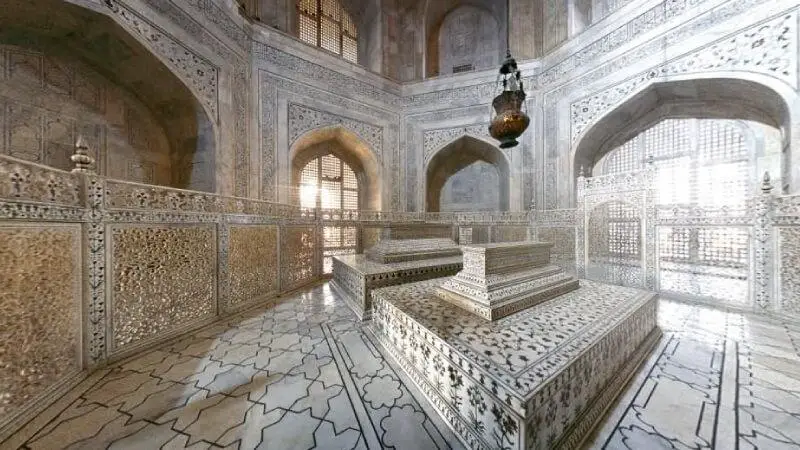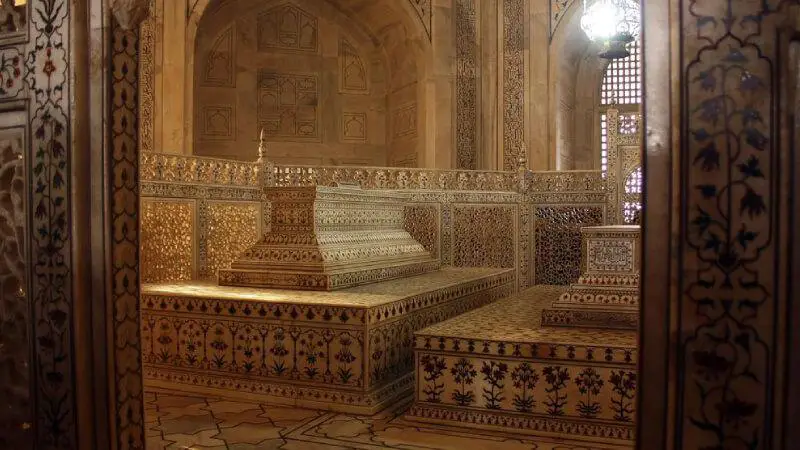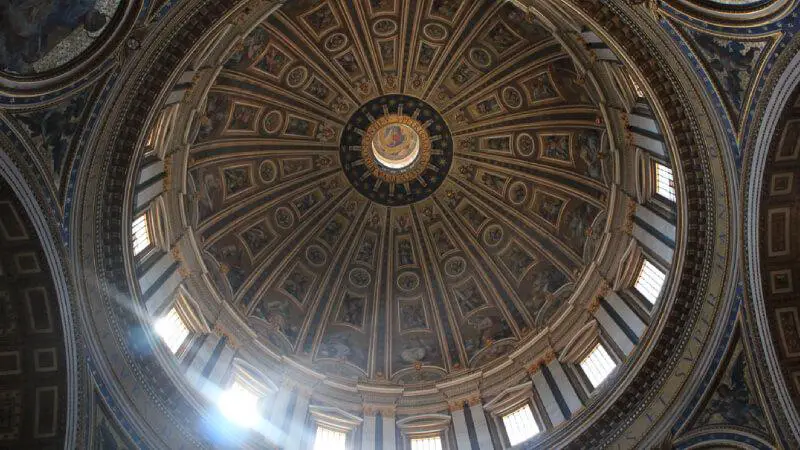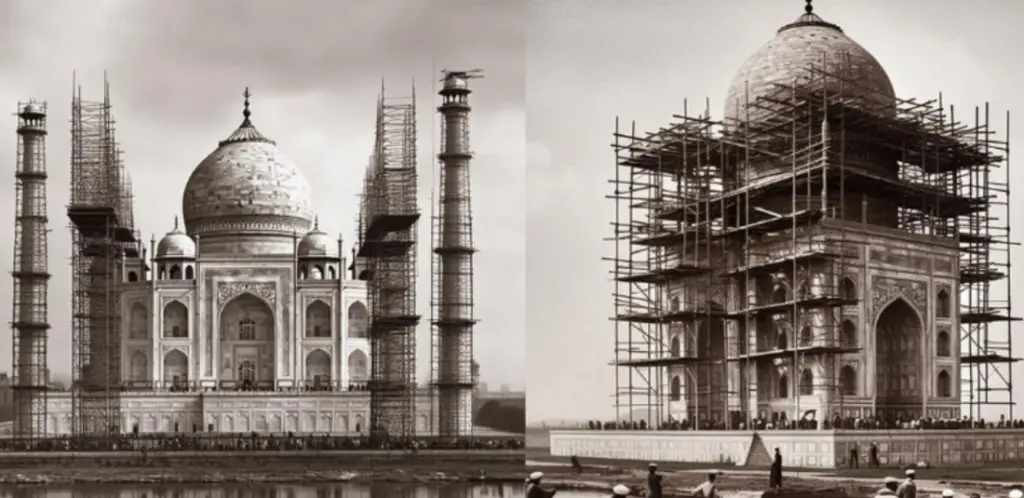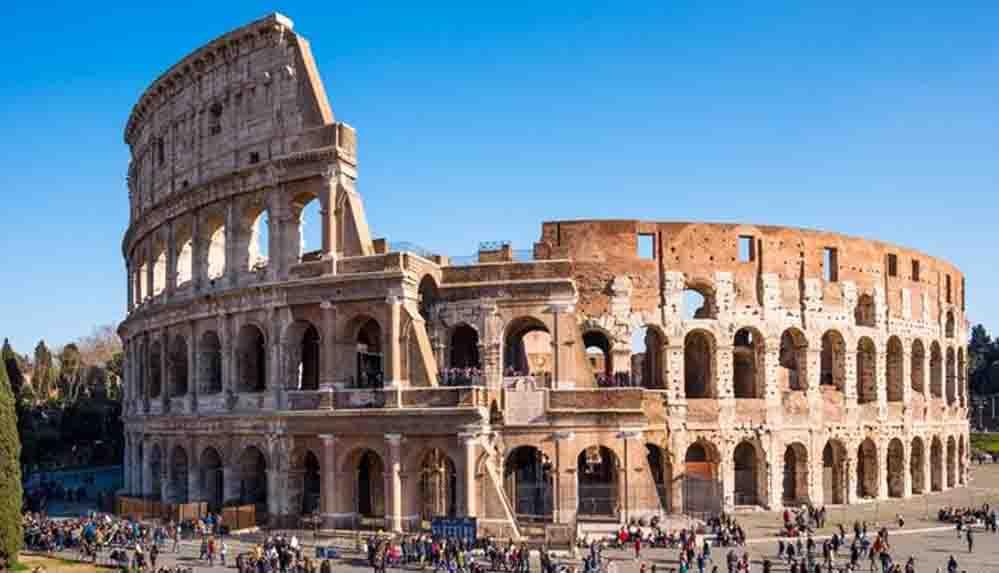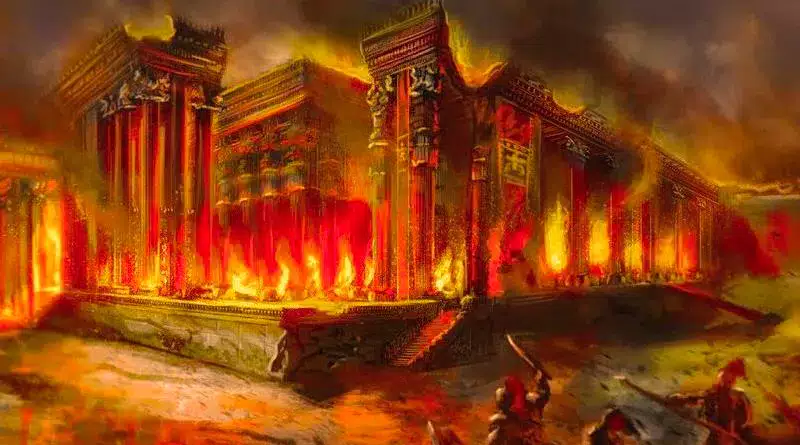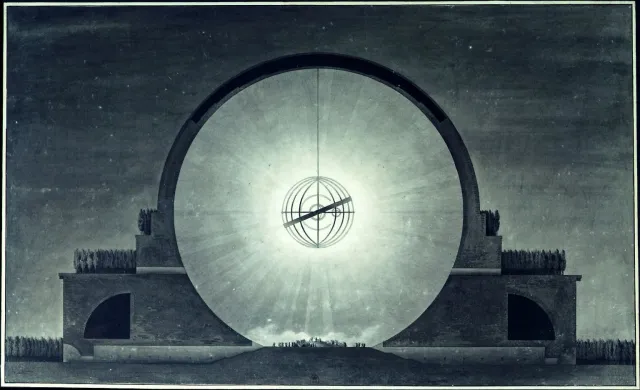The Taj Mahal is a world-renowned architectural monument located in Agra, India. This magnificent structure was built by Babür Emperor Shah Jahan in memory of his beloved wife Mümtaz Mahal. Today, the Taj Mahal is recognized as a world heritage site and has become one of India’s most recognizable symbols.
- The Taj Mahal is a monumental architectural monument in Agra, India, built by the Mughal Emperor Shah Jahan in memory of his wife Mumtaz Mahal.
- The construction of the building began in 1632 and was completed in 1653. During the construction process, thousands of workers and craftsmen worked devotedly.
- The Taj Mahal is considered the purest and most sublime expression of love and devotion. Shah Jahan’s deep love for Mumtaz Mahal has been perpetuated forever through this structure.
- The architects seamlessly combined the influences of Mughal, Islamic and Indian architecture to create the unique design of the Taj Mahal.
- The architecture of the building is mesmerizing with its elegant details, symmetrical structures and majestic dome made of white marble.
- The interiors of the Taj Mahal include the mausoleum, which houses the tombs of Mumtaz Mahal and Shah Jahan. The burial chamber is elaborately decorated and offers an emotional atmosphere.
- Frequently used in Bollywood movies, the Taj Mahal stands out as a symbol of romance and sensuality.
- The Taj Mahal is one of India’s most well-known tourist attractions, offering visitors an unforgettable experience.
- Surrounded by legends and facts, the Taj Mahal adds to the mystery and charm of the structure.
- The Taj Mahal has a rightful place on the world heritage list as a symbol of architectural excellence and represents the creative talents of humanity and the universal power of love.
Let’s take a detailed look at the architectural design, history and significance of the Taj Mahal.
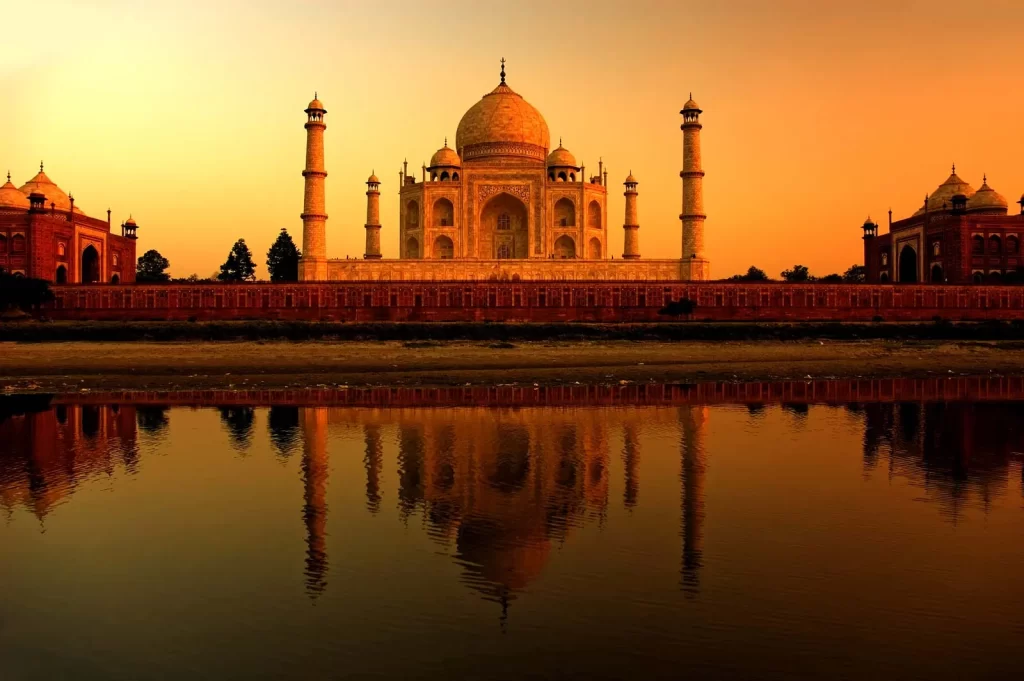
Historical Context: A Monument to Mughal Splendor
One of the world’s most iconic structures, the Taj Mahal stands as a testament to the grandeur and architectural brilliance of the Mughal Empire. It is a 17th century mausoleum built by Emperor Shah Jahan in memory of his beloved wife Mumtaz Mahal. This architectural masterpiece is located in Agra, India and is a UNESCO World Heritage Site.
Mourning and Memorialization of Shah Jahan
The story behind the construction of the Taj Mahal is full of love and sorrow. After the death of his wife Mumtaz Mahal, Shah Jahan was devastated. To honor her memory, he embarked on a mission to build a mausoleum that would be a symbol of their eternal love. Construction of the Taj Mahal began in 1632 and took more than 20 years to complete. It is said that Shah Jahan spared no expense to create a monument befitting the beauty and grace of his beloved wife.
The Architectural Summit of an Empire
The Taj Mahal is considered the pinnacle of Mughal architecture. It is a fusion of various architectural styles, blending elements of Iranian, Islamic and Indian design. The main structure of the Taj Mahal is made of white marble, which gives it a pristine and ethereal look. Intricate carvings and delicate inlays of precious stones add to its charm and make it a true masterpiece of craftsmanship.
Blending Indo-Islamic Styles with Symmetry
One of the most striking features of the Taj Mahal is its symmetrical design. The mausoleum is perfectly balanced with identical structures on both sides. This symmetrical layout is characteristic of Indo-Islamic architecture and reflects the Mughal belief in cosmic order and harmony. The use of arches, domes and minarets further enhances the aesthetic appeal of the Taj Mahal and showcases the architectural genius of the Mughals.
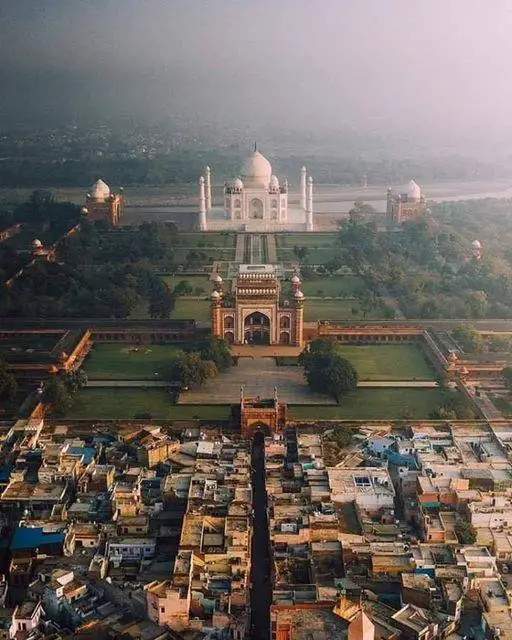
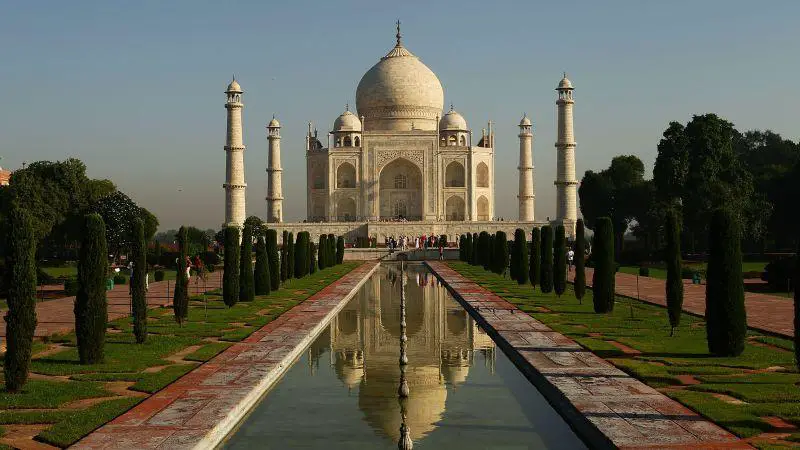
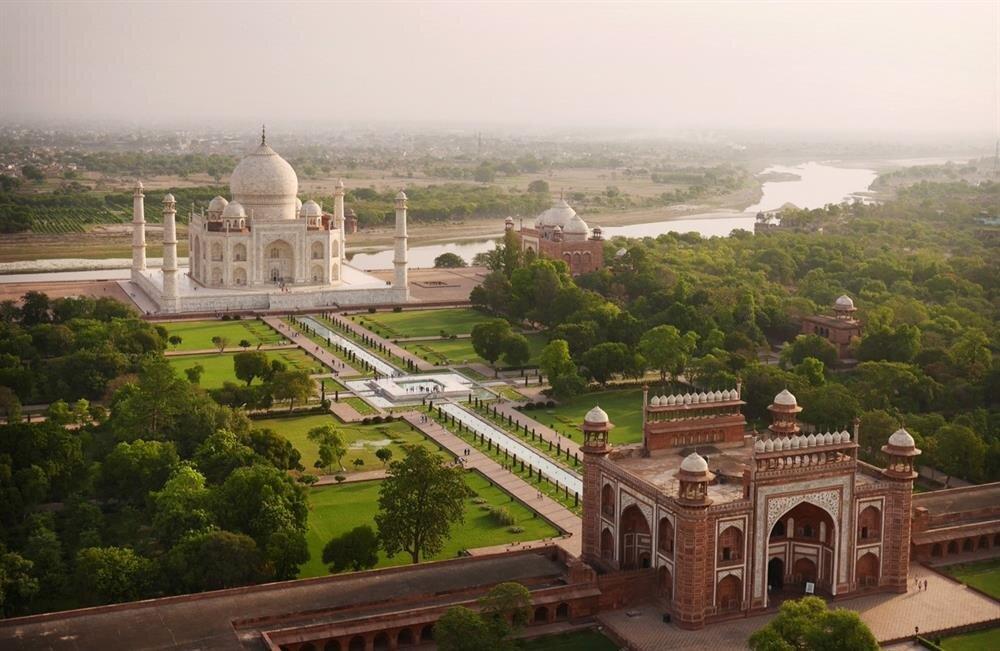
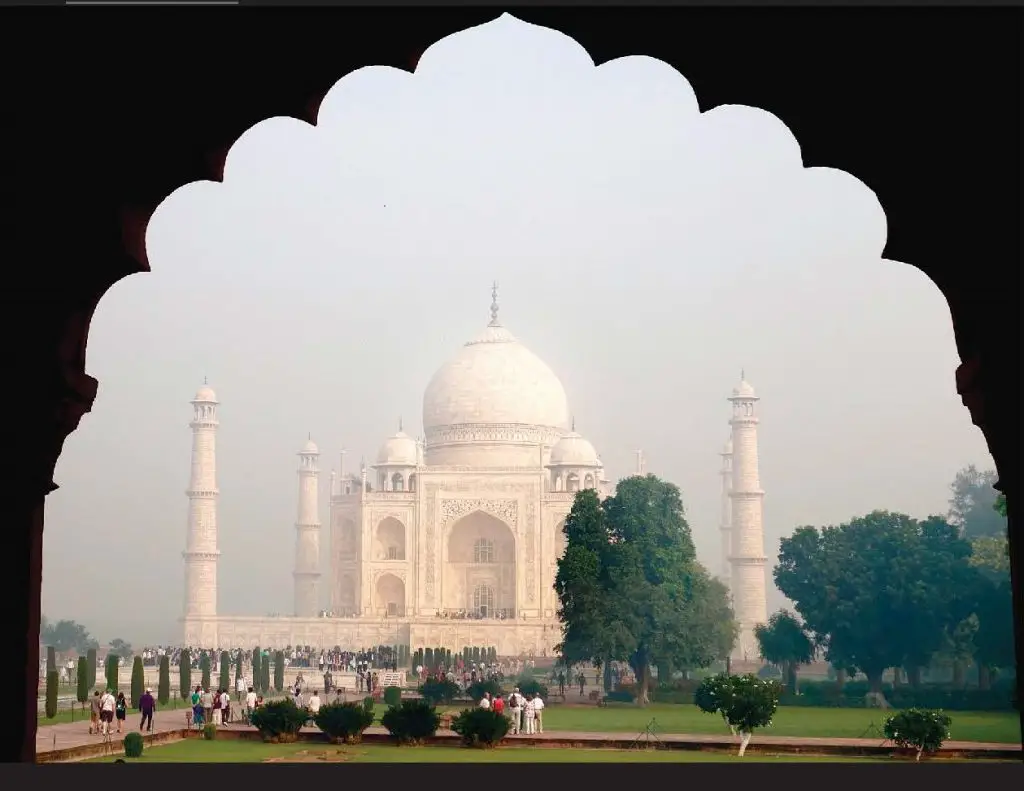
Marble Splendor along the Yamuna River
The Taj Mahal is located on the banks of the Yamuna River, which adds to its picturesque setting. The reflection of the mausoleum in the calm waters of the river makes for a mesmerizing sight, especially during sunrise and sunset. The white marble facade of the Taj Mahal changes color throughout the day, from a soft pink hue in the morning to a brilliant white during the day and a golden glow at sunset. This ever-changing color palette adds to the magic of the monument.
Craftsmanship Beyond Comparison
The craftsmanship displayed in the construction of the Taj Mahal is truly remarkable. Skilled artisans and craftsmen from across the Mughal Empire were brought together to create this architectural marvel. The intricate carvings on the walls, the delicate inlays of semi-precious stones and the elaborate calligraphy are a testament to the skill and dedication of these craftsmen. The use of geometric patterns and floral motifs adds elegance to the overall design, making the Taj Mahal a true masterpiece of art.
Architectural Creativity: Symmetry, Geometry and Details
Perfect Proportions The Basis of Symmetry
The Taj Mahal is famous for its perfect symmetry, a testament to the architectural creativity of the Mughals. Every aspect of the monument has been carefully designed to maintain perfect proportions. The main structure is symmetrical along both the vertical and horizontal axes, creating a sense of balance and harmony. This adherence to symmetry is not only visually pleasing, but also reflects the Mughal belief in cosmic order and perfection.
Gardens of Eden Lush Courtyards and Waterways
The lush gardens surrounding the Taj Mahal have been meticulously landscaped and maintained. Inspired by the concept of paradise in Islamic architecture, these gardens were designed to create a calm and peaceful environment. The gardens are arranged in a geometric pattern with symmetrical paths, fountains and waterways. The reflection of the Taj Mahal in the water adds to the ethereal beauty of the gardens, creating a picturesque setting.
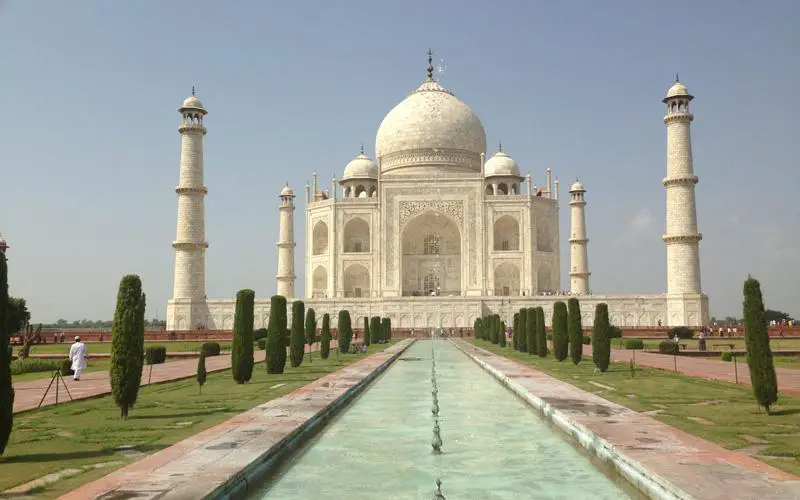


White Marble Splendor: A Vision Realized
The Taj Mahal was built mainly using white marble, which gives it a pristine and ethereal look. The use of white marble was a conscious choice by Shah Jahan as it symbolizes purity and sanctity. The marble used in the construction of the Taj Mahal was sourced from various parts of India and carefully selected for its quality and durability. The marble’s smooth texture and glittering sheen make the Taj Mahal truly magnificent, especially when it shines in sunlight or moonlight.
Location and Context: Locating Beauty along the Yamuna
Breathtakingly beautiful, the Taj Mahal is not only an architectural marvel, but also a product of its unique location and historical context. Located on the banks of the Yamuna River in the city of Agra, the Taj Mahal is a testament to the rich heritage and cultural significance of the Mughal Empire.
Shores of Inspiration The Calm Environment of the Yamuna
The Yamuna River flows gracefully alongside the Taj Mahal, providing a serene and picturesque backdrop to this architectural masterpiece. The calm waters of the river reflect the splendor of the monument, creating a mesmerizing sight. The Yamuna River has long been a source of inspiration for poets, artists and architects, and its presence adds to the spiritual beauty of the Taj Mahal.
Agra: Capital of the Mughal Kingdom
Agra, the city where the Taj Mahal is located, was once the capital of the Mughal Empire. It served as a center of power and culture during the reign of the Mughals. The city’s rich historical and architectural heritage is reflected in the numerous monuments and structures that dot its landscape. The Taj Mahal stands as the crown jewel of Agra, symbolizing the splendor and opulence of the Mughal era.


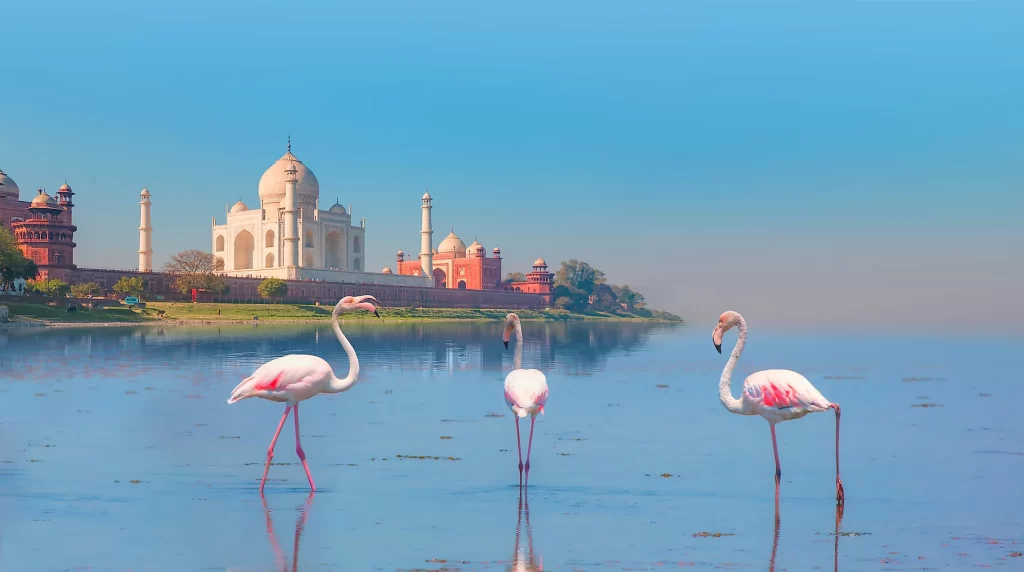
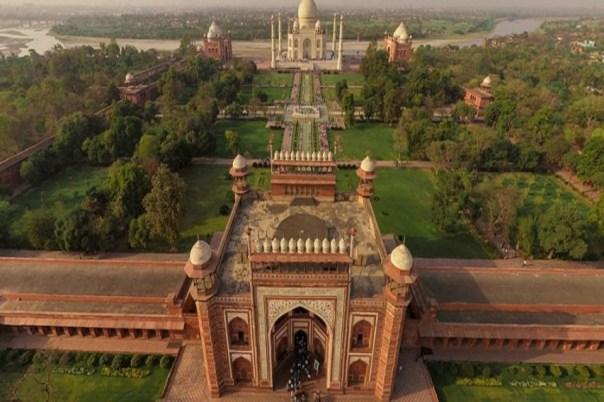
Architectural Dialogue: The Taj and its Monuments
Agra is home to many other magnificent Mughal monuments that collectively form a rich architectural ensemble. The Taj Mahal, along with the Agra Fort and Fatehpur Sikri, showcase the architectural brilliance of the Mughals. These structures engage in a dialog, each contributing to the overall narrative of Mughal architecture. The Taj Mahal, with its unique blend of Indo-Islamic styles, stands as the epitome of this architectural dialogue.
Tourism and Conservation: Sustaining Heritage
The Taj Mahal has become one of India’s most popular tourist attractions, attracting millions of visitors from around the world. The influx of tourists has brought both economic benefits and challenges to the monument’s conservation. Efforts have been made to strike a balance between tourism and conservation to ensure that the Taj Mahal continues to be preserved for future generations. Strict regulations and guidelines are in place to protect the integrity of the monument and the surrounding environment.
An Icon Reborn: Global Recognition and Local Pride
The architectural significance and cultural value of the Taj Mahal has earned it worldwide recognition. In 1983, it was designated a UNESCO World Heritage Site in recognition of its universal significance. The Taj Mahal has become an iconic symbol representing India’s rich history and cultural heritage. Locally, the monument is a source of great pride as the people of Agra cherish their connection to this architectural marvel.
The Legacy of the Taj: Echoing Across the Centuries
With its timeless beauty and architectural splendor, the Taj Mahal has left an enduring legacy that resonates through the centuries. From its touching love story to its global recognition as a wonder of the world, the Taj Mahal continues to fascinate and inspire people from all walks of life.
A Story of Eternal Love: Shah Jahan and Mumtaz Mahal
The Taj Mahal was built by the Mughal Emperor Shah Jahan as a symbol of love in memory of his beloved wife Mumtaz Mahal. Their love story is one of the most enduring in history and the Taj Mahal stands as a testament to their eternal bond. The construction of the monument was a labor of love in which Shah Jahan spared no expense to create a mausoleum that would honor the memory of Mumtaz Mahal for all time.
Architectural Impact: Globally Inspiring Design
The architectural brilliance of the Taj Mahal has had a profound influence on design and architecture worldwide. Its symmetrical layout, intricate details and harmonious proportions have inspired countless architects and designers. Elements of Mughal architecture such as arches, domes and decorative calligraphy can be seen in buildings around the world. The Taj Mahal’s influence extends far beyond its physical presence, shaping the way we perceive and appreciate architectural beauty.
A Wonder of the World: Recognition by UNESCO
The Taj Mahal was inscribed on the UNESCO World Heritage List in 1983, cementing its status as a wonder of the world. This prestigious designation recognizes the monument’s outstanding universal value and importance as a cultural and historical treasure. The inclusion of the Taj Mahal on the list of UNESCO World Heritage Sites ensures that it is protected and preserved for the admiration and appreciation of future generations.
Infinite Beauty The Wonder of the Mughals
The Taj Mahal stands as a marvel of Mughal architecture, showcasing the exquisite craftsmanship and attention to detail that characterized the empire. The use of white marble, intricate inlay work and the play of light and shadow create a mesmerizing effect that changes throughout the day. The beauty of the Taj Mahal is eternal, transcends time and leaves a lasting impression on all who behold its splendor.
Frequently Asked Questions (FAQ)
- What is the significance of the love story of the Taj Mahal?
- The Taj Mahal was built by Emperor Shah Jahan as a symbol of love for his wife Mumtaz Mahal. Their love story is legendary and adds a poignant and romantic element to the monument.
- How did the Taj Mahal influence global architecture and design?
- The architectural brilliance of the Taj Mahal has inspired designers and architects worldwide. Its symmetrical layout, intricate details and use of decorative elements have had a profound influence on architectural design.
- Why is the Taj Mahal considered a wonder of the world?
- The Taj Mahal’s recognition as a wonder of the world is due to its outstanding cultural and historical value. Its architectural beauty and significance make it a wonder that deserves global recognition.
- What makes the Taj Mahal a marvel of Mughal architecture?
- The Taj Mahal demonstrates the exquisite craftsmanship and attention to detail that characterized Mughal architecture. The use of white marble, intricate inlay work and the interplay of light and shadow make it a true marvel.
- Taj Mahal is located on the banks of which river?
- The Taj Mahal is located on the banks of the Yamuna River.
- What is the importance of Agra in relation to the Taj Mahal?
- Agra was the capital of the Mughal Empire and home to many magnificent Mughal monuments, including the Taj Mahal.
- Are there any other notable monuments in Agra besides the Taj Mahal?
- Yes, Agra is also home to other important monuments such as the Agra Fort and Fatehpur Sikri, which showcase the architectural brilliance of the Mughals.
- How tourism is managed to ensure the preservation of the Taj Mahal
- Strict regulations and guidelines are in place to manage tourism at the Taj Mahal and ensure the protection of the monument and the surrounding environment.
- What is the significance of the worldwide recognition of the Taj Mahal?
- Its worldwide recognition, including the inscription of the Taj Mahal as a UNESCO World Heritage Site, highlights its universal significance and cultural value.
- How did the Baburids achieve such perfect symmetry in the Taj Mahal?
- The Mughals achieved perfect symmetry in the Taj Mahal through meticulous planning and precise execution. Every aspect of the monument was carefully measured and designed to maintain symmetry.
- What is the significance of the calligraphy on the Taj Mahal?
- The calligraphy on the Taj Mahal is quoted from the Koran and is a tribute to the divine. It adds a spiritual element to the monument and shows the Mughals’ commitment to their faith.
- Are the gardens surrounding the Taj Mahal open to the public?
- Yes, the gardens surrounding the Taj Mahal are open to the public. Visitors can stroll through the lush greenery and enjoy the tranquil setting.
- How was the white marble used for the Taj Mahal obtained?
- The white marble used in the construction of the Taj Mahal was sourced from various parts of India. It was carefully selected for its quality and brought to Agra for the construction of the monument.
- When is the best time to visit the Taj Mahal?
- The best time to visit the Taj Mahal is at sunrise or sunset, when the monument is bathed in a soft golden light. The changing colors of the marble create a magical atmosphere.
- How long did it take to build the Taj Mahal?
- It took more than 20 years to complete the construction of the Taj Mahal.
- What materials were used in the construction of the Taj Mahal?
- The main structure of the Taj Mahal is made of white marble, while the intricate carvings and inlays are made of semi-precious stones.
- Is the Taj Mahal open to the public?
- Yes, the Taj Mahal is open to the public and attracts millions of visitors from around the world every year.
- Can visitors enter the Taj Mahal?
- Yes, visitors are allowed to enter the Taj Mahal and explore its magnificent interiors.
- Is the Taj Mahal a UNESCO World Heritage Site?
- Yes, the Taj Mahal is a UNESCO World Heritage Site, highlighting its cultural and historical importance.
My Thoughts About Taj Mahal
The Taj Mahal is a structure that represents the pinnacle of architectural perfection. This white marble monument offers a striking simplicity, with the brilliance of its roof and the transparency of its interior. The subtleties inside emerge as a product of the depth of design and thought process. The Taj Mahal maintains a mesmerizing balance, offering a simple and elegant look without exaggeration. Transparency is a unique feature of this structure, creating a seamless link between the outside environment and the interior. Every detail has been carefully considered. The Taj Mahal represents not only aesthetic opulence, but also historical and cultural richness. The Taj Mahal is one of the pioneering examples of romanticism in architecture and proves that its reputation as a world heritage site is well deserved.
What do you think about the Taj Mahal? Do you think this unique structure is one of the greatest masterpieces of world architecture? Does this legendary love story make it special? If you haven’t checked it out yet, you can also read our Bosjes Chapel review here.
Architect: Ustad Ahmad Lahori
Architectural Style Mughal and Islamic Architecture
Year: 1632-1653
Location: Agra, India
Discover more from Dök Architecture
Subscribe to get the latest posts sent to your email.










